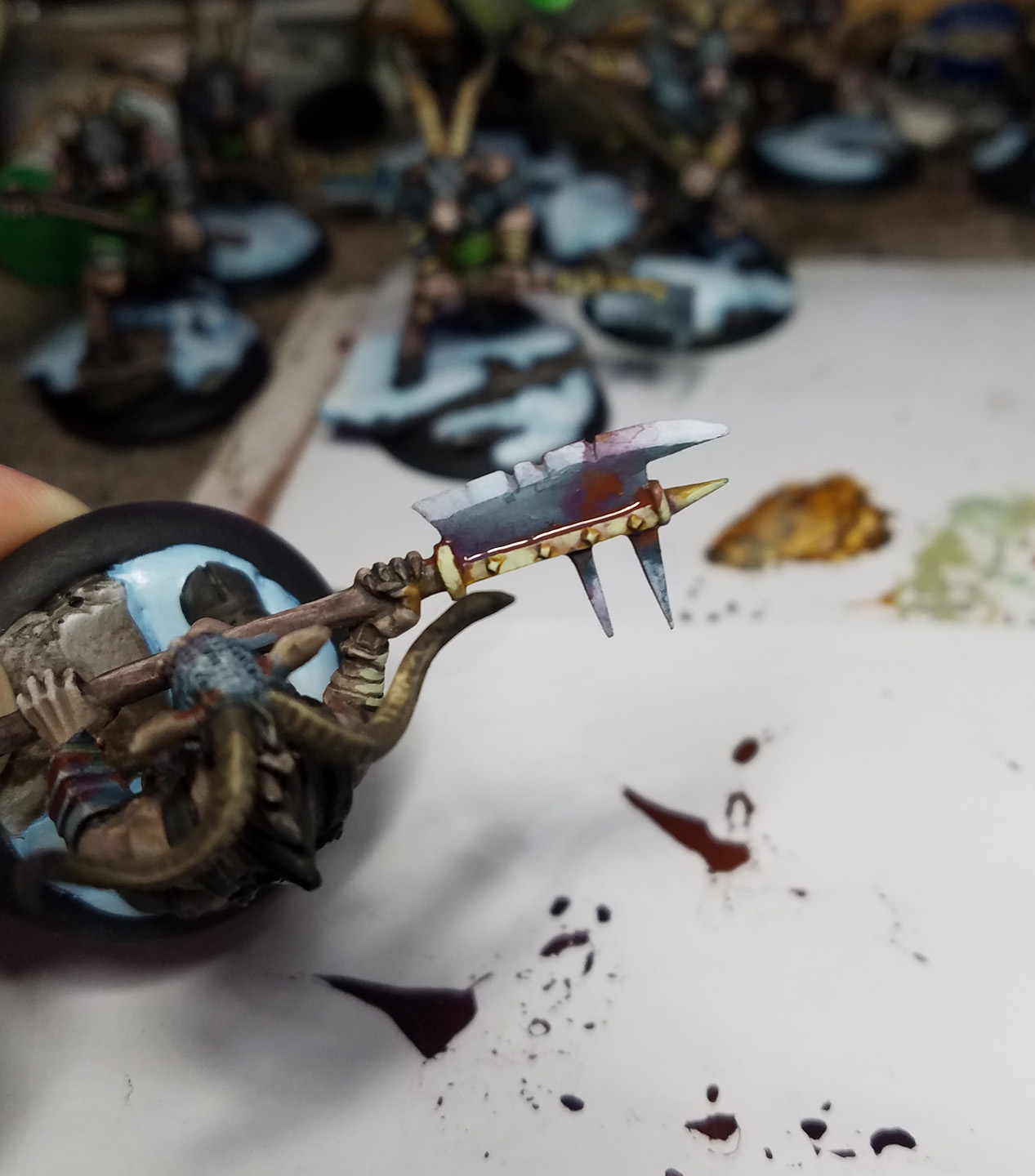The latest Facebook live session once again focused on oil paints, and the reasons why I have been using them more and more.
Here's a link:
I was trying to demonstrate the value of using the oils to map out the majority of your colors and values, a bit like a "Super Shaded Basecoat" technique. For instance, on this figure, I could rapidly place a number of different colors on the cloak, and easily blend them together. If that had been done with acrylics, it would have taken much longer to get those color transitions, and I probably would not have been as bold with the choices!
I also worked on this figure in the pre Live Session hangout. In this instance, I wanted to see if I could glaze very thinned down oils over wet oil paint. Even I was shocked at how well that worked! Of cousre, I was following my normal rules of 'thick paint over thin paint' and vice versa.
My initial layers were thicker, which allowed such thin paint to adhere to these layers, as opposed to wiping them away. This can happen with wet acrylics, but not to the degree that it might with oils.
I did more of this glazing during the Facebook live session. My initial layers were very thin, putting a darker glaze on all the surfaces. The successive layers became thicker and thicker, which allowed them to stick to this initial underlayment.
Once I had built up these thicker layers, I could go back in with those very thin glazes, which really amazed me!
I will be posting finished results of those figures once they are completed and based. Again, the idea if to use the oils like I use the Stynlrez primers, and that is to establish a nice solid base of colors and tones, which I can finish off with more precision with my usual acrylics.
These are the kinds of things that I want to show in much greater detail, especially in the Live session format. This is why I established the Patreon Page, so that I could spend more time doing these things on camera! Here's a link:



























































